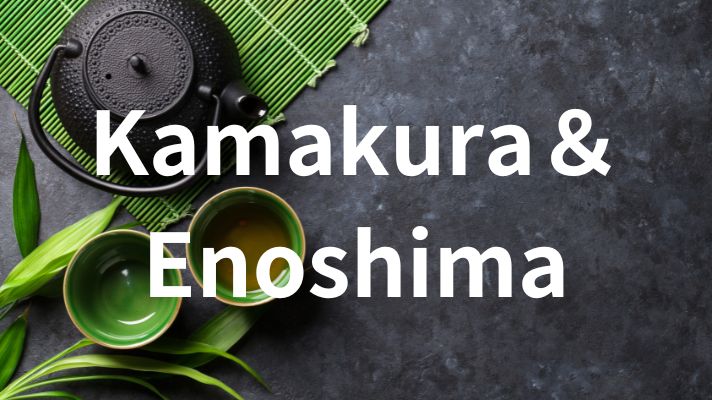Kamakura & Enoshima are one of the best day trips from Tokyo—a perfect mix of Zen temples, ocean views, historic streets, and relaxed coastal vibes. If you’re looking for a guide that’s easy to scan (and easy to plan with), this page is your complete Kamakura & Enoshima itinerary hub.
In this guide, you’ll find the must-visit temples in Kamakura, practical travel tips, and a simple route that works for first-time visitors. You can also extend your trip to Enoshima—just a short train ride away.
📌 Saving this for later? This page is designed as a Pinterest-friendly “base guide.” Bookmark it, then explore the detailed pages linked throughout.
👉 Arriving in Tokyo and heading straight to Kamakura? Start smoothly—book a reliable Airport Taxi for seamless transfers from Tokyo airports to your accommodation area.
Kamakura & Enoshima at a Glance
- Best for: day trips, first-time visitors, culture + coastal views
- Main areas: Kita-Kamakura (Zen temples), Hase (Great Buddha & Hase-dera), Kamakura Station area, Enoshima
- Recommended pace: 1 day (Kamakura only) or 1.5–2 days (Kamakura + Enoshima)
- Best seasons: June (hydrangeas), autumn foliage, clear winter days
Quick Itinerary Ideas
Option A: Classic Kamakura Day Trip
- Kita-Kamakura: Engaku-ji → Kencho-ji
- Hase area: Hase-dera → Kotoku-in (Great Buddha)
- Kamakura Station area: stroll & shopping streets (Komachi-dori area)
Option B: Kamakura + Enoshima (Best for Pinterest-style “scenic day”)
- Morning: Zen temples in Kita-Kamakura
- Midday: Hase-dera + Great Buddha
- Late afternoon: Enoshima for ocean views & sunset
🍽️ Looking for food spots too? I keep restaurants in a separate guide so this page stays easy to plan with. 👉 See: Kamakura restaurants
Must-Visit Temples in Kamakura
Kamakura was once Japan’s political and cultural center, and its temples reflect centuries of history and Zen aesthetics. Below are the essential temples to include in your first trip—each one offers a different atmosphere, from iconic landmarks to quiet hidden gardens.
Hase-dera
Best for: hydrangeas (June), sea views, peaceful gardens, and unique spiritual spots. Hase-dera is one of the most photogenic temples in Kamakura and a great “first stop” in the Hase area.
Highlights of Hase-dera
The Iconic Entrance and Red Lantern
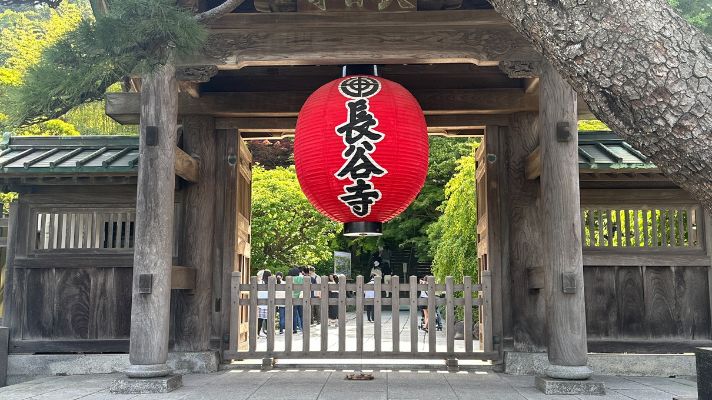
Visitors enter through an impressive gate with a large red lantern—a symbolic transition from the busy streets into a calm sacred space.
The Thousand Jizo Statues
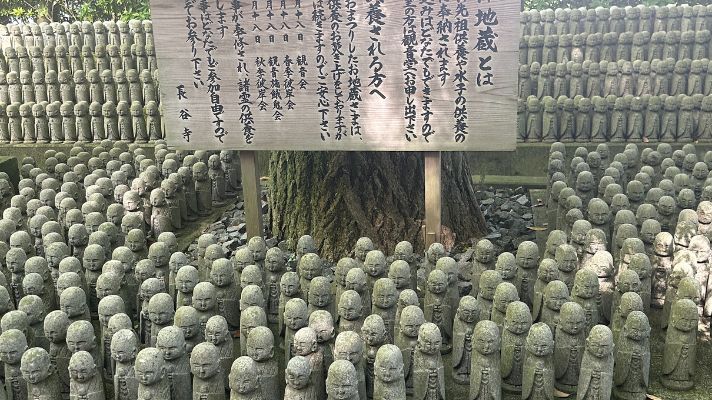
One of the most moving scenes is the area filled with small Jizo statues, placed in prayer and remembrance. It’s a quiet, reflective part of the grounds—please keep voices low here.
The Beautiful Buddhist Sculptures
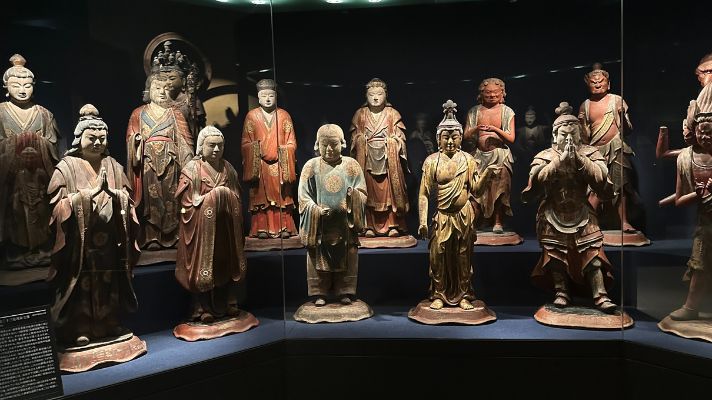
Inside the museum area, you can admire richly detailed wooden statues and guardian figures—perfect for travelers interested in religious art and craftsmanship.
The Mysterious Benten-kutsu Cave
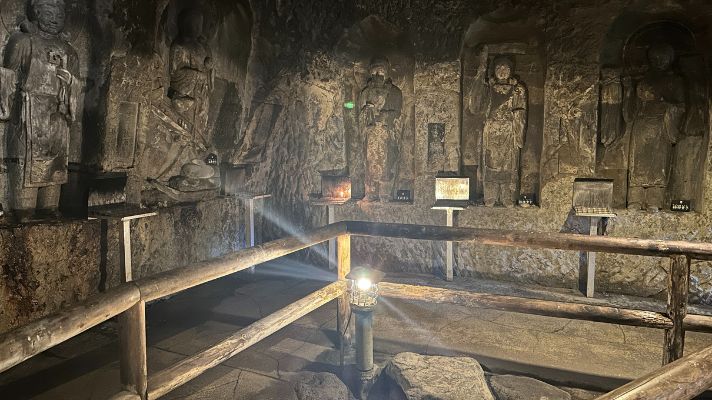
Don’t miss the Benten-kutsu Cave, a dimly lit grotto with stone-carved images of Benzaiten and her disciples. It’s a short walk-through but feels wonderfully atmospheric.
The Candle Lighting Ritual

Lighting a candle inside the temple halls is a simple, memorable ritual. The gentle glow creates a calm space for quiet wishes, gratitude, and reflection.
Visiting Hase-dera
Hase-dera is easy to reach from central Kamakura and pairs perfectly with the Great Buddha nearby. If you’re visiting in June, plan extra time—hydrangea season is especially popular.
Official site: Hase-dera
Engaku-ji
Best for: classic Zen atmosphere, historic buildings, and a peaceful temple walk near Kita-Kamakura Station. Engaku-ji is one of Kamakura’s most important Zen temples and an ideal start for a “Zen temple morning.”
Highlights of Engaku-ji
- Sanmon Gate: one of the most impressive temple gates in Japan.
- Shariden (Reliquary Hall): a designated National Treasure (viewing may depend on season/special openings).
- Butsuden (Buddha Hall): a central space for Zen rituals and quiet contemplation.
- Temple grounds: scenic paths that feel especially beautiful in autumn.
When you visit Engaku-ji, consider stopping by Benten Chaya on the temple grounds—an airy tea house with great views on clear days.
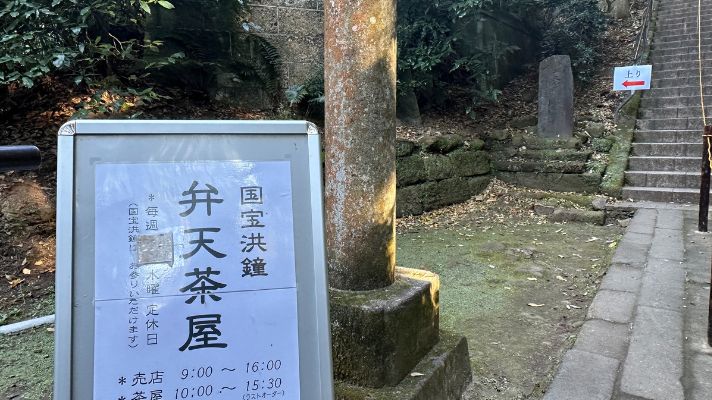
To reach it, you’ll climb more than 140 steps—steep and narrow in places, so allow time and be mindful when it’s crowded.
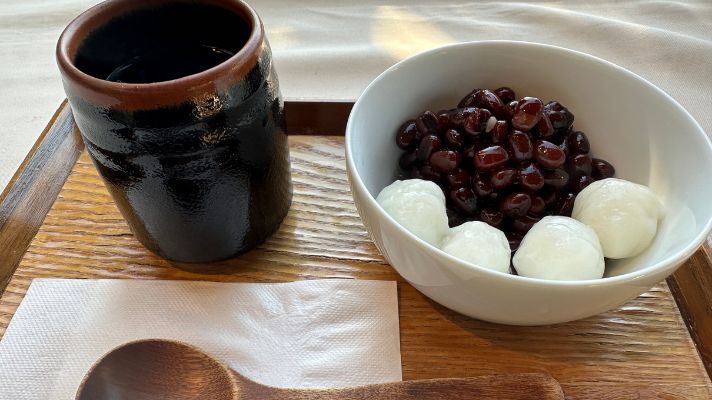
👉 For more details >>> Benten Chaya (food guide)
Visiting Engaku-ji
Engaku-ji is very accessible and perfect for travelers seeking a calm Zen experience without leaving the train line. It’s especially rewarding in the morning when the grounds feel quieter.
Official site: Engaku-ji
Kotoku-in Temple: The Home of the Great Buddha of Kamakura
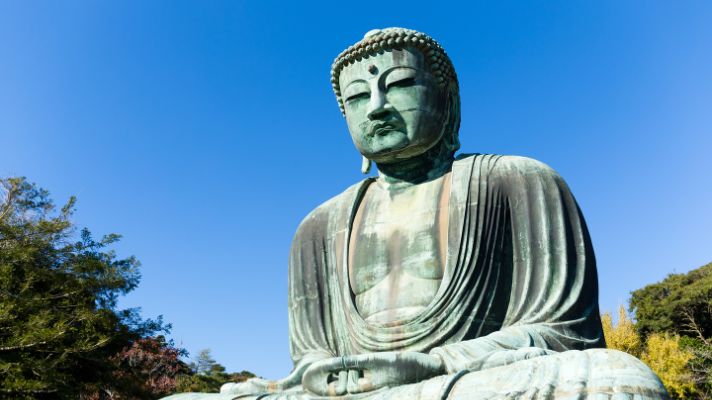
Best for: the iconic Kamakura photo. Kotoku-in is famous for the monumental bronze Great Buddha (Daibutsu), one of Japan’s most recognizable landmarks and a must-visit for first-time travelers.
You can also step inside the Great Buddha through a small opening at the base—an unusual and memorable experience that highlights the engineering behind this historic statue.
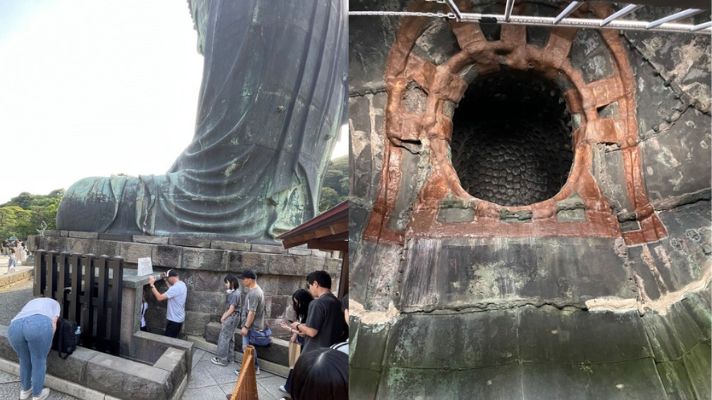
Highlights of Kotoku-in Temple
- The Great Buddha (Daibutsu): one of the largest Buddha statues in Japan and a symbol of peace.
- Visitor experience: option to go inside the statue (check availability/fees on site).
- Photography: great light in the morning; expect crowds on weekends.
Visiting Kotoku-in Temple
Kotoku-in is located near Hase-dera, so it’s easy to visit both in the same route. Plan a little extra time if you want to enter the statue interior.
Kencho-ji Temple
Best for: a “full Zen temple complex” experience. Kencho-ji is Kamakura’s oldest Zen training monastery and offers impressive gates, wide temple grounds, and beautiful hillside scenery.
Highlights of Kencho-ji Temple
The Majestic Sanmon Gate (山門)
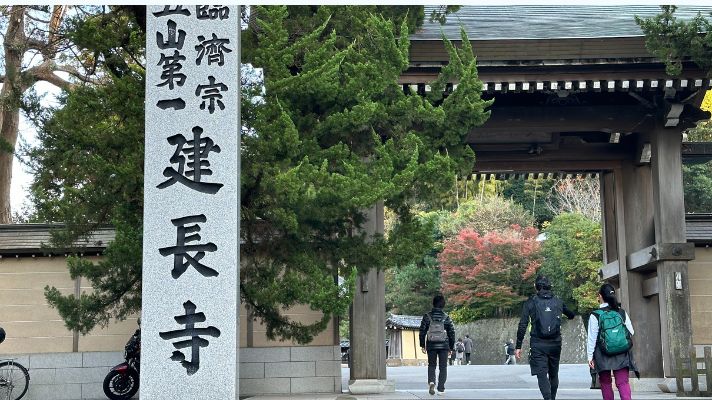
The grand Sanmon Gate marks your entry into a deep Zen world—massive wooden beams and classic Kamakura-era atmosphere.
The Golden Karamon Gate (唐門)
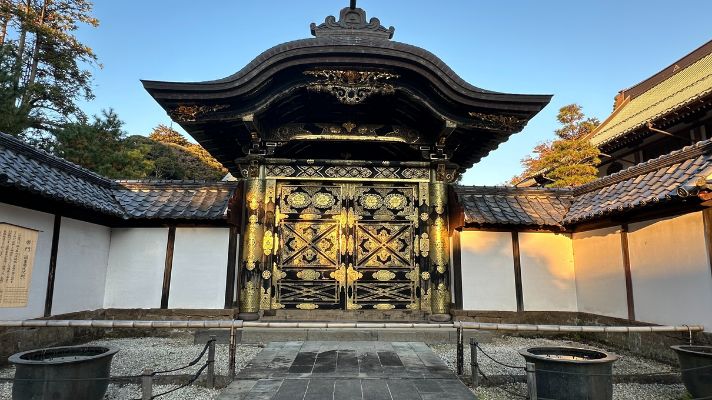
The black-and-gold Karamon Gate is one of the most striking structures in the complex—an elegant, historically significant feature.
The Main Hall (Butsuden, 仏殿)
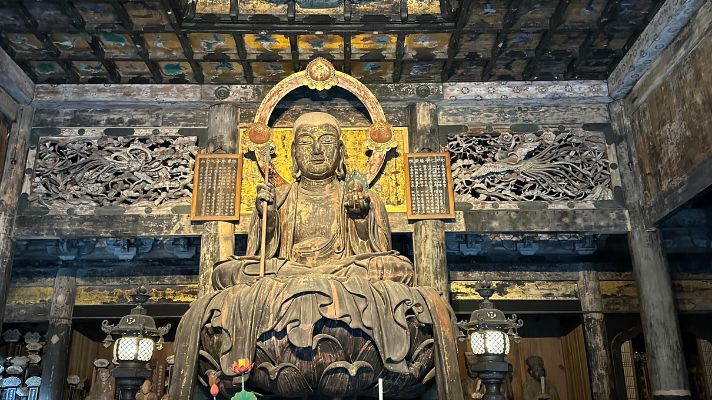
The Butsuden is a serene hall for prayer and reflection, with polished wooden floors and a calm Zen aesthetic.
The Zen Garden and Hojo (方丈) Hall
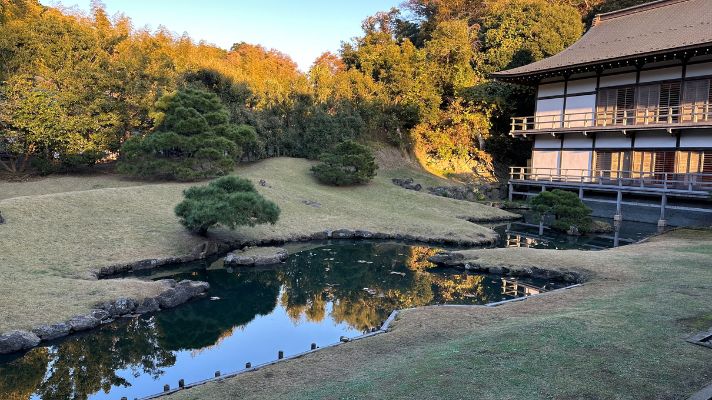
The Hojo area and garden are ideal for slowing down—quiet water, carefully shaped trees, and Kamakura hills in the background.
The Stunning Dragon Ceiling in Hatto (法堂)
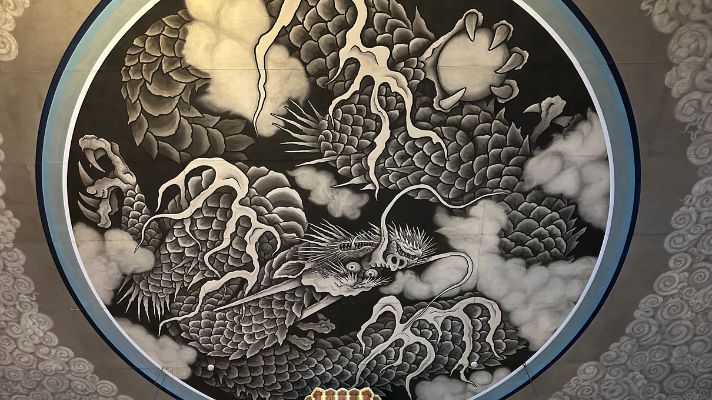
Look up in the Dharma Hall to see the dramatic dragon ceiling painting—a powerful symbol of protection and Zen spirit.
Visiting Kencho-ji Temple
Kencho-ji works well in the same half-day route as Engaku-ji (both in the Kita-Kamakura area). If you love temple walks and open grounds, this is one of the best choices in Kamakura.
Komyo-ji Temple
Best for: a quieter temple vibe and seasonal scenery. Komyo-ji is a wonderful option if you want to step away from the busiest routes and enjoy a more relaxed pace.
Highlights of Komyo-ji Temple
- Main Hall (Hondo): a calm focal point for prayer and reflection.
- Lotus pond: especially beautiful in summer when lotus flowers bloom.
- Seasonal gardens: a quiet space for photography and peaceful walks.
Eishoji Temple
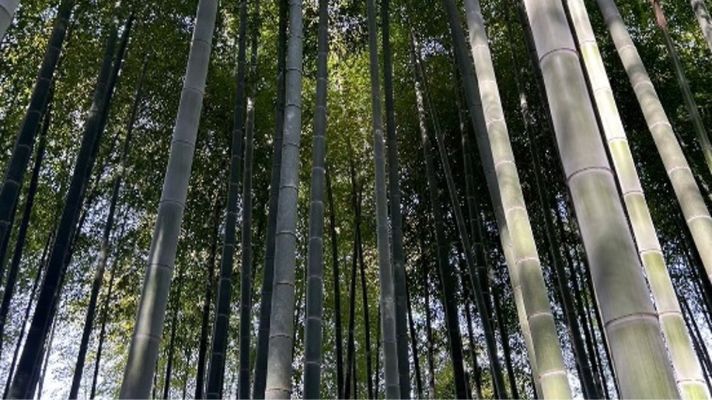
Best for: hidden-gem seekers. Eishoji is a lesser-known temple with a gentle atmosphere—great if you want somewhere calm and uncrowded.
Highlights of Eishoji Temple
- Quiet gardens: peaceful seasonal scenery.
- Off-the-beaten-path: ideal for visitors who prefer a slower, quieter walk.
- Cultural atmosphere: a more local, community-based feeling.
Extend Your Trip to Enoshima
If you have extra time (or want that classic “temples + ocean” day), add Enoshima after Kamakura. It’s an easy train ride and delivers coastal views, shrines, caves, and sunset scenery.
- Best timing: late afternoon for ocean views and golden-hour photos
- Great pairing: after Hase-dera + Great Buddha
- What to do: shrine visit, sea breeze walk, viewpoints, caves
📌 Tip: If you’re choosing between “more temples” or “Enoshima,” first-time visitors usually enjoy Enoshima as a refreshing contrast to temple walking.
Visiting Tips
Best Times to Visit
- Spring: cherry blossoms and comfortable weather.
- June: hydrangeas (especially famous at Hase-dera).
- Autumn: vibrant foliage and crisp walking conditions.
- Winter: fewer crowds and beautiful clear days for photos.
Temple Etiquette
- Speak softly and be respectful in halls and prayer areas.
- Photography may be restricted—check signs before shooting.
- You may need to remove shoes when entering temple buildings.
Transportation (Tokyo → Kamakura)
Kamakura is easy to reach from Tokyo by train. The JR Yokosuka Line connects Tokyo Station to Kamakura Station in about one hour. Once you arrive, you can explore by walking, local buses, or trains between Kamakura and Enoshima areas.
🍽️ For dining ideas and local sweets, see the separate guide here: Kamakura restaurants
Where to Stay: Best Hotel Base for Kamakura & Enoshima
If you are planning more than a quick day trip—or want a comfortable base for both Kamakura and Enoshima—staying around Fujisawa Station is a smart choice. It offers excellent transport access while avoiding the crowds of central Kamakura.
Super Hotel Shonan / Fujisawa Station South Exit (Recommended – I stayed here)
This is my personal recommendation because I have actually stayed here. If you want a clean, quiet, and practical hotel for exploring Kamakura and Enoshima efficiently, this hotel works extremely well.
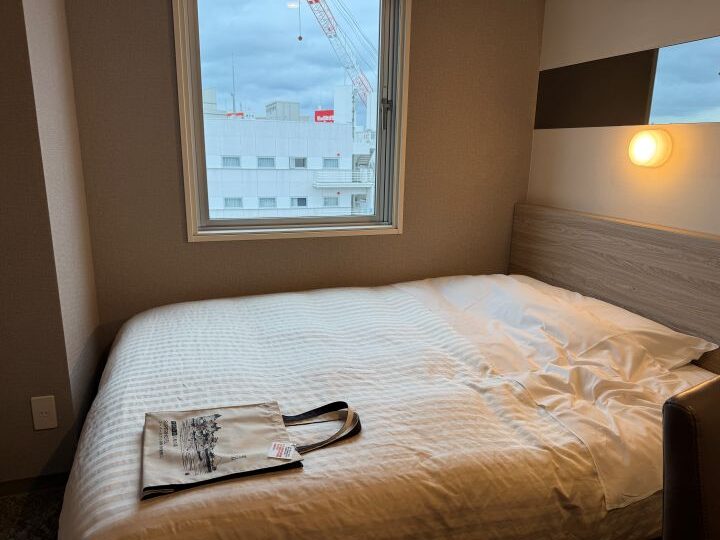
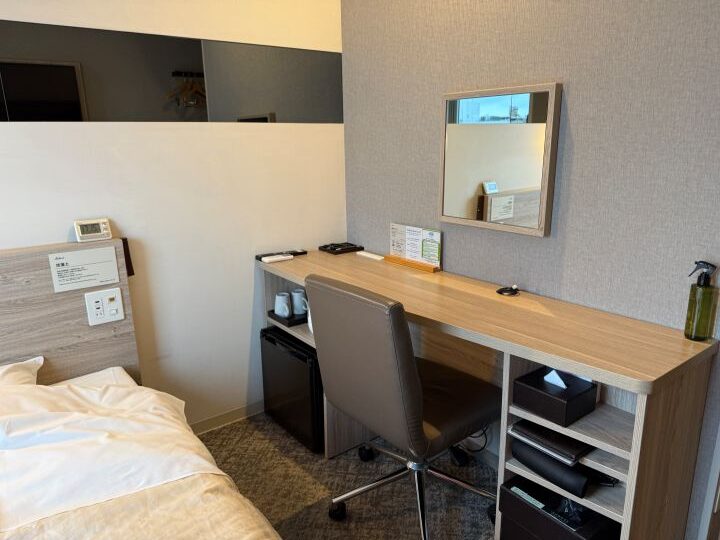
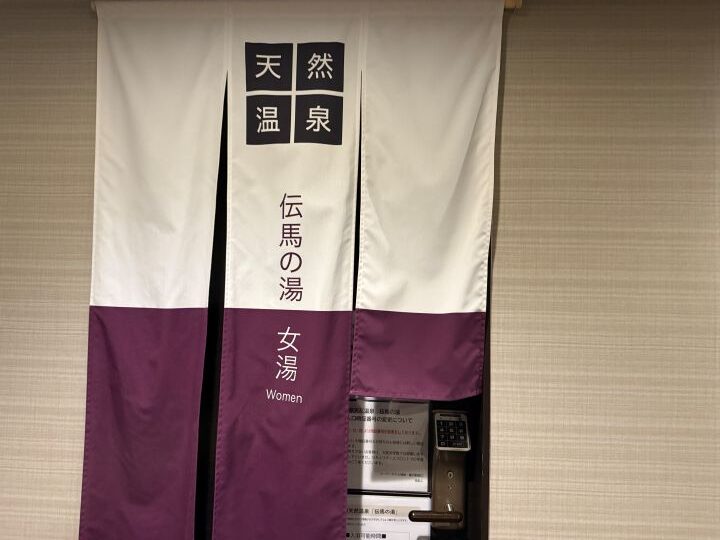
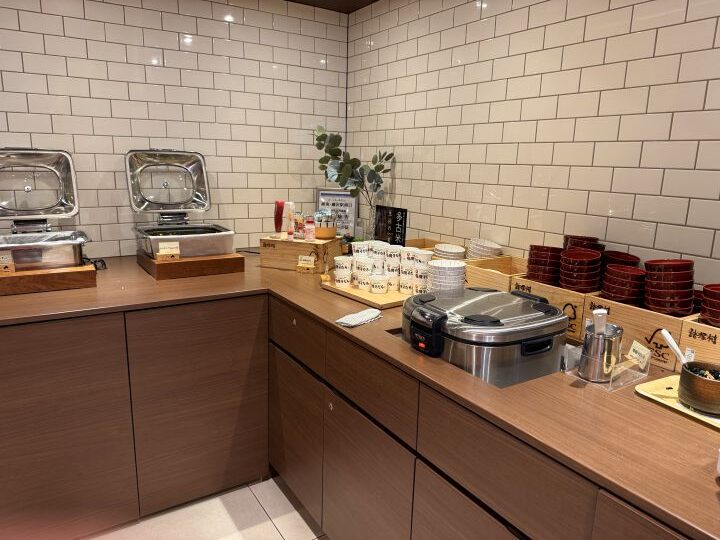
I found Super Hotel Shonan – Fujisawa Station South Exit to be a very comfortable base after a full day of temple walking. The rooms are clean and quiet, there is a natural hot spring bath, and Fujisawa Station makes traveling to both Kamakura and Enoshima very easy.
If your priority is efficient sightseeing with a reliable place to relax at night, staying near Fujisawa can be more practical than staying directly in Kamakura.
👉 Check availability and prices:
Search Super Hotel Shonan on Agoda
Conclusion
Kamakura’s temples offer a beautiful blend of history, spirituality, and nature—perfect for a peaceful escape from Tokyo. From the iconic Great Buddha at Kotoku-in to the serene Zen atmosphere of Engaku-ji, each spot adds a different layer to your trip.
If you have time, extending your day to Enoshima adds the refreshing coastal element that makes this route feel complete—temples, hills, and ocean all in one journey.
📌 Planning your route? Save this page as your “base guide,” then jump to the linked articles for deeper details (especially the food guide).
👉 Finished your Kamakura & Enoshima adventure? End it smoothly—book your Airport Taxi and travel back in comfort.
